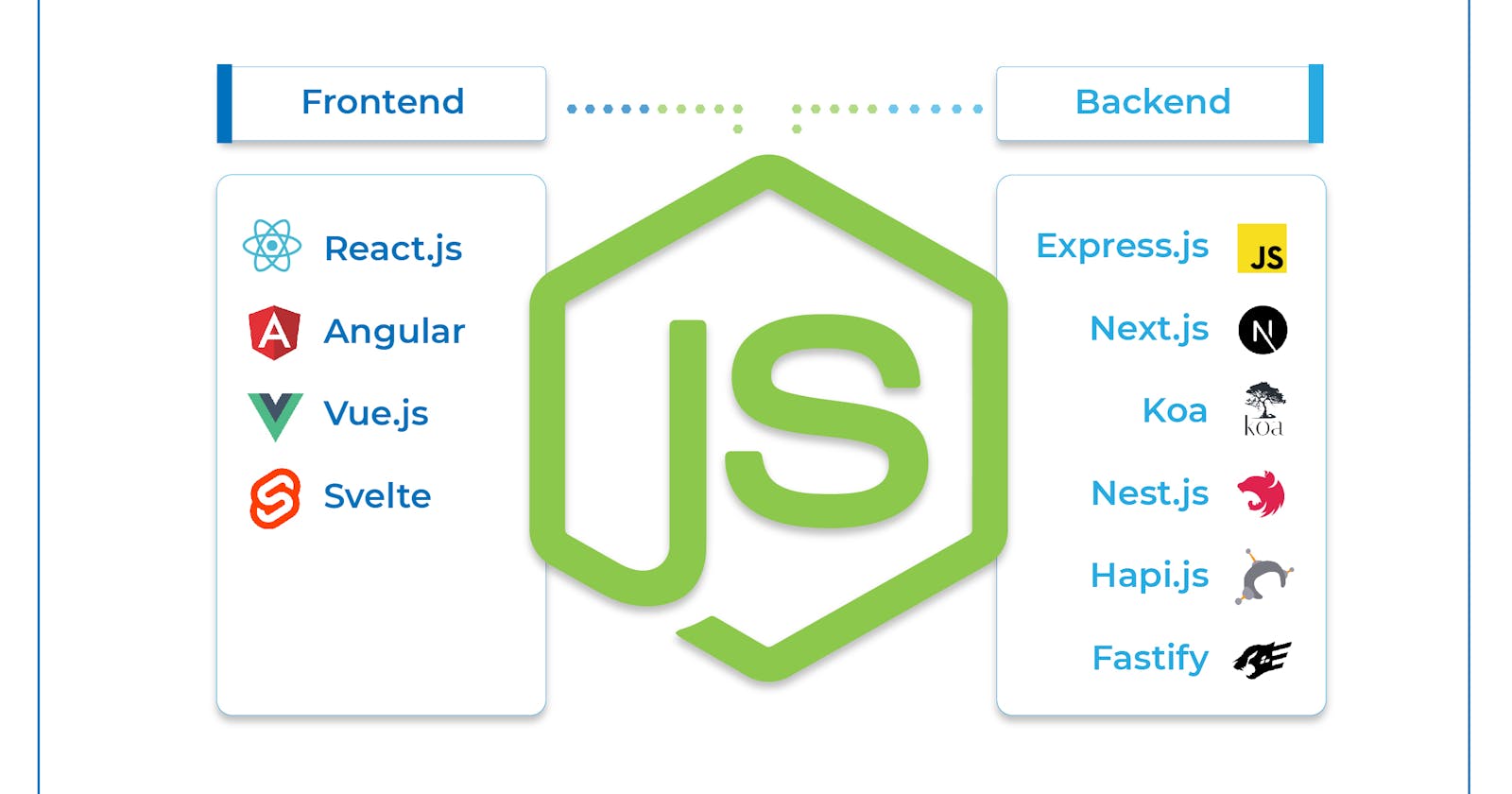Exploring Node.js: Choosing the Right Frameworks for Frontend and Backend Development
In the ever-expanding landscape of web development, Node.js has emerged as a powerhouse for building scalable and efficient applications. With its non-blocking I/O model and event-driven architecture, Node.js enables developers to create high-performance applications for both frontend and backend.
One of the key decisions developers face when starting a Node.js project is choosing the right frameworks for both frontend and backend development. In this article, we'll explore some of the most popular options available and discuss their strengths and use cases.
PermalinkBackend Frameworks:
Express.js: Express.js is often the go-to choice for building backend services with Node.js. Its minimalist design and robust features make it ideal for creating RESTful APIs and web applications. Express.js provides a lightweight and flexible foundation, allowing developers to easily add middleware for handling various tasks such as routing, request parsing, and authentication.
Koa.js: Developed by the creators of Express, Koa.js takes a more modern approach to middleware and asynchronous flow control. It leverages ES6 features like async/await and generators to streamline development and improve code readability. Koa.js is particularly well-suited for applications that require fine-grained control over middleware and request handling.
NestJS: NestJS is a progressive Node.js framework that combines elements of object-oriented programming, functional programming, and reactive programming. It is heavily inspired by Angular and provides a robust architecture for building scalable and maintainable server-side applications. NestJS promotes the use of TypeScript for enhanced type safety and code maintainability.
Sails.js: Sails.js is a full-featured MVC framework for building data-driven APIs and real-time web applications. It builds on top of Express.js and provides a wealth of built-in features such as blueprints, ORM integration, and WebSocket support. Sails.js follows the convention-over-configuration principle, allowing developers to focus on business logic rather than boilerplate code.
Meteor.js: While not exclusively a Node.js framework, Meteor.js deserves mention for its full-stack capabilities and real-time data synchronization. Meteor.js enables developers to build web, iOS, and Android applications using a single codebase, thanks to its tight integration with Node.js on the backend and MongoDB for data storage.
PermalinkFrontend Frameworks:
React.js: React.js has become the de facto choice for building modern user interfaces. Its component-based architecture and virtual DOM reconciliation algorithm make it highly efficient and easy to reason about. React.js is backed by Facebook and has a vast ecosystem of libraries and tools, making it suitable for building everything from simple UI components to complex single-page applications.
Angular: Angular, developed and maintained by Google, is a comprehensive framework for building web, mobile, and desktop applications. It provides features like two-way data binding, dependency injection, and a modular architecture. Angular is well-suited for large-scale applications with complex requirements, thanks to its opinionated structure and built-in tools for testing and optimization.
Vue.js: Vue.js is a progressive JavaScript framework that emphasizes simplicity and ease of integration. It shares many similarities with React.js but takes a more pragmatic approach to building user interfaces. Vue.js is known for its gentle learning curve and flexibility, making it a popular choice for developers of all skill levels.
Svelte: Svelte challenges traditional frontend frameworks by shifting the work from the browser to the build step. Instead of shipping a bulky runtime library to the client, Svelte compiles components into highly optimized JavaScript code during the build process. This results in faster load times and smaller bundle sizes, making Svelte an attractive option for performance-critical applications.
Ember.js: Ember.js is a robust framework for building ambitious web applications. It follows a convention-over-configuration approach, providing sensible defaults and best practices out of the box. Ember.js includes features like routing, data management, and templating, allowing developers to focus on building features rather than wiring up infrastructure.
In conclusion, Node.js offers a wealth of options for both frontend and backend development, allowing developers to choose frameworks that best suit their project requirements and preferences. Whether you're building a RESTful API, a real-time web application, or a complex single-page application, there's a Node.js framework that can help you get the job done efficiently and effectively.
